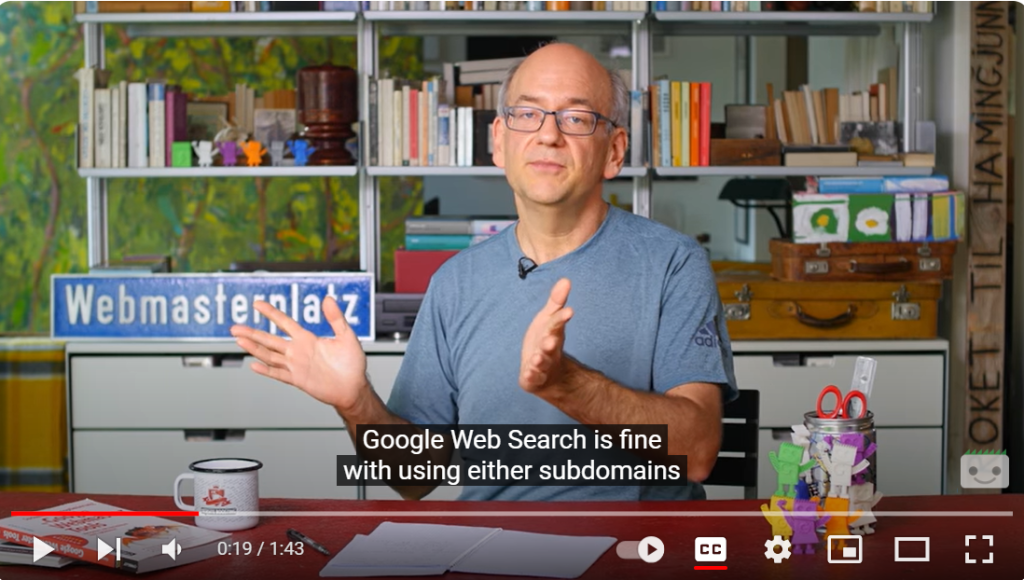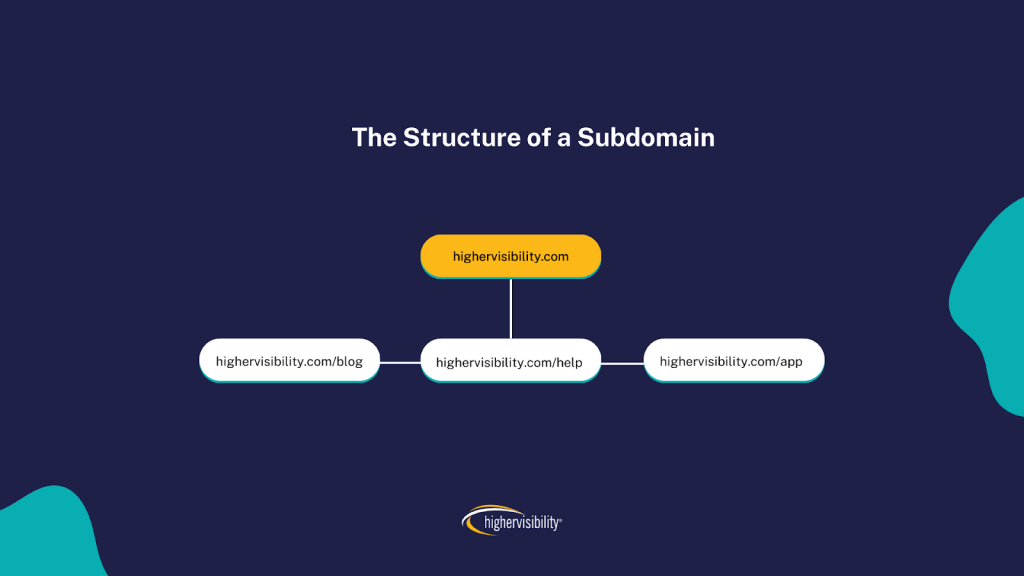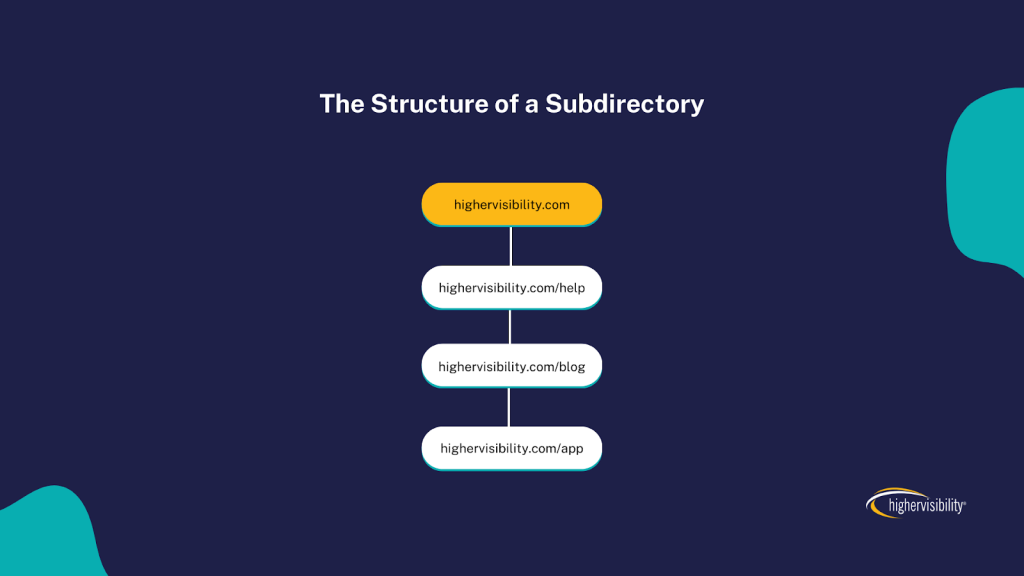Subdomain VS Subdirectory: Impact on SEO Explained
Should you use subdomains or subdirectories?
This debate has lingered in the SEO space for decades, even after Google affirmed that neither impacts SEO performance.

But some SEO pros argue otherwise. And here’s why.
They believe migrating your web pages from subdomains to subdirectories improves your organic rankings. Therefore, subdirectories are better for SEO than subdomains.
See this case study from Aleyda Solis, the founder of Remotersnet. She reported an improvement in rankings after moving a blog from a subdomain to a subdirectory:

However, this is only one of many scenarios.
Saying subdirectories are better than subfolders is misleading without considering the factors involved. In this article, we’ll discuss each, their pros and cons, and their best use cases.
Let’s go!
What is a Subdomain?
A subdomain is an extension of a primary domain that allows you to send web visitors to a different web address from your domain name. It points to a specific IP address or directory in your account.
The subdomain is added as a prefix before the second-level domain (SLD) and top-level domain (TLD) in a URL:

Example:
If a URL is example.com, the subdomain for the blog page is likely blog.example.com. Also, the latter is always treated as a separate entity from your TLD. Think of them as ‘mini’ domains or extensions of your main domains.
As you can see in the image below, although the subdomains are affiliated with the root domains, they operate independently as separate websites:

Pros:
- It helps to organize content/services within a larger domain
- Improves web navigation, leading to a better user experience
- Allows to segment different sections of the website
- It makes it easier for you to scale your product/service offerings
Cons:
- Too many subdomains can lead to brand dilution
- It can be less memorable for users
- It may result in a reduction in website traffic
How do Subdomains affect SEO?
Search engines treat subdomains differently than root domains. Here is a snippet from Mike King’s Google Algo Leak article referencing as such.

As a result, link equity may not be distributed equally across the subdomains and, therefore, will require separate optimization from the root domain.
This means that if your root domain has high DA (domain authority), subdomains affiliated with it may not inherently benefit from it and will need separate optimizations to boost SEO performance. It works both ways. Authority built on your subdomains may not be transferred to your root domains.
However, using subdomains has a unique SEO advantage. Since they operate as separate entities, you can leverage them to provide a better, personalized user experience for different target markets that may be more topically relevant.
Also, if you want to build credibility outside the focus topic of your root domain, using subdomains can help you achieve that without diluting the topical authority of your root domain. This allows you to scale your service/product offerings to target different target markets, expanding your keyword list, ranking potential, and website traffic.
That’s how big brands with vast products operate. They do this to create targeted experiences for each market. As a result, they can maintain a cohesive brand identity without straying from what they’re initially known for.
Tip: John Mueller, Google’s Search Advocate, advises web admins to verify subdomains differently on Google Search Console (to make it easier for search bots to crawl and index the site) and track performance separately. You can watch the complete video here.
What is a Subdirectory?
A subdirectory (or subfolder) is a directory located in another directory on the same website server. Unlike the subdomain, this entirely depends on the main website and is only a different pathway. It is added as a suffix and immediately after the root domain name.
Since it’s under the root domain, subdirectories make organizing data logically and hierarchically easier. This structure provides a frictionless pathway for users to quickly navigate through different sections and find topics of interest.
For example:
Consider our root domain, highervisibility.com. The blog section is added as a subdirectory, highervisibility.com/blog/.

The image below also shows that subdirectories are directly linked to the root domain. They are simply different pathways (or folders) under the same root domain:

Pros:
- Keyword density can be managed more easily
- It is more straightforward to crawl and index since all content is under the root domain
- Eliminates the need to manage separate websites
- Allows for distribution of link equity across different web pages
Cons:
- Having too many subdirectories on a website can make the site convoluted. Users may have to click through multiple nested folders before reaching their desired content, leading to a poor user experience.
- If not properly managed, there’s a risk of keyword cannibalization.
- It may result in cluttered URLs if the website has a deep hierarchy.
- It’s entirely dependent on the root domain, limiting its capabilities and flexibility.
How do Subdirectories affect SEO?
As I shared earlier, subdirectories allow for the hierarchical organization of your website. This has a couple of SEO-related benefits.
First, having all your web pages as subdirectories can provide a positive user experience. The hierarchical structure makes it easier for users to find what they’re searching for and differentiate between different website sections.
In addition, since the folders are listed under the website’s main directory, link juice earned from the root domain (or subdirectory itself) can be distributed to other pages of the website. This solidifies the strength of the website’s SEO.
As Aleyda Solis shared in this image, using subdirectories allowed for better integration of the UI with the main site, improved crosslinking, and gave an excellent base to double down on the content published:

From Google’s perspective, subdirectories are more accessible to crawl since all content is listed under the primary domain. John Mueller added:
“… this helps us with crawling since we understand that everything is on the same server and can crawl it in a similar way. Sometimes, it also makes it easier for users who recognize that these sections are all a part of the same bigger website.”
I believe both – subdomains and sub-directories – have their unique use cases. Let’s explore a few:
When to use a subdomain
Here are some scenarios where you might want to use a subdomain:
- Blog:
Subdomains are perfect if you want to cover different topics extensively and maintain a separate identity for each topic. This is because you can create distinct blog sections under each subdomain, making it easier for users to navigate and find sections related to their interests.
Also, since subdomains are standalone entities, you can build topical relevance for each topic. This allows you to target a broader range of keywords, increasing your visibility and search engine real estate.
- International SEO:
Subdomains are also great for creating content that targets a different market outside your domain’s focus. They provide a platform for creating unique branding, content, and user experiences tailored to the specific audience’s interests.
This is perfect for franchise businesses with franchisees across various countries, as it allows each franchise to have its own target subdomain and cater to the local country.
This is a more cost-effective option compared to buying and building separate domains from scratch.
Read more: SEO strategies for franchise businesses.
- To create different products/services:
As I shared above, subdomains can help to build visibility and topical relevance outside your niche market. This is most helpful for large enterprise businesses offering different products/services. It’s also an excellent opportunity to build authority in different niches in a way that complements your overall brand identity.
Google, for example, has subdomains such as maps.google.com, docs.google.com, translate.google.com, drive.google.com, etc. These subdomains serve different purposes as they target different keywords and users.
- Adding resources or help pages:
This is likely the most common use of subdomains. Using a separate subdomain for your resource and support page allows for greater customization, such as adding tools or features tailored to customer support needs.
Take HubSpot, for example. Its help page is a subdomain containing all helpful resources to help newbies find their foot on the platform. It also serves as a hub for other subdomains that are beneficial to the user:

- To separate the mobile version from the rest of the website:
Some website owners prefer to host the mobile version of their website on a sub-domain. Why? This allows users to navigate sites optimized for desktops easily. It also makes providing a seamless experience for users easier without distorting your entire site structure.
Facebook, for example, uses the m.facebook.com subdomain to enable users to access the site from mobile browsers.
Now that we’ve covered different applicable scenarios for subdomains let’s explore cases perfect for sub-directories:
When to use sub-directories
Listed below are when you should use a subdirectory:
- Organized Content Management:
Using subdirectories is a good option if you want to keep your blogs/articles organized and easy to maintain. This works if you’re a small or medium-sized business with minimal content. The structure of subdirectories makes it easier for Google bots to find and index your website on search engines.
How subdirectories are structured allows users to scuffle between pages and find topics covering their areas of interest without getting confused. This steep learning curve improves user experience and the overall SEO performance of your website.
For example, a website with few categories can use subdirectories to conceptualize them into distinct sections. An eCommerce product website selling clothes may have ‘/clothing/men’ and ‘/clothing/women/’ to segment products accordingly.
- To build topical relevance:
Using subdirectories is ideal if you’re focusing on one niche or covering a specific topic on your website. You can use them to cover a topic in depth and breadth, building your credibility and establishing your brand as the go-to source for the focus topic.
For example, our blog, highervisibility.com/blog, is a subdirectory covering everything you need to know about building your business digitally. This has contributed significantly to our SEO performance as it increases our domain strength in this topic:
- For uniform branding:
Lastly, if you’re catering to a specific market segment, use subdirectories to manage your branding since they share the same design with the home page. This uniformity helps establish a cohesive brand presence and aids brand recall.
Final Verdict: Subdomain vs. Subdirectory, which is better for SEO?
It depends on several factors: business size, needs, goals, and website.
John Mueller advises using what is best for your website. He also recommends planning for long-term goals, which I agree with. How do you plan to evolve as a business? Factor in your overarching business goals before taking a step.
For instance, subdomains are a better option if you’re looking to branch out and expand your service offerings to areas outside your niche market. Also, using a subdomain will be better applicable if you have less relevant content topics.
However, sub-directories are a better option if you’re covering one topic and intend to build relevancy.
For best results, consult an SEO expert to provide customized guidance based on your website and business goals. Contact us today for a free strategy tailored to your individual business needs.
